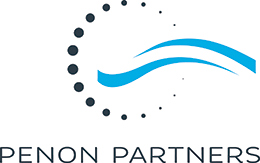The creation of an IT roadmap marks the commencement of an ongoing journey rather than a finite task, necessitating preparedness for continuous evolution and strategic foresight. Regular evaluations of the IT roadmap are critical. These reviews function like essential strategy sessions, providing opportunities to assess progress, address significant challenges, and strategize forthcoming initiatives. Far from mere procedural formalities, these sessions are indispensable for ensuring the roadmap remains a facilitator of progress rather than an impediment.
Here are the top areas I consider when reviewing your roadmap.
ADAPT:
Remaining current with technological trends is imperative. In a domain where today’s innovation quickly becomes obsolete, staying alert to emerging technologies is essential. This vigilance ensures the avoidance of outdated practices and embracing progressive solutions.
If IT roadmaps were personified as superheroes, adaptability would be their defining trait. This quality entails the capacity to pivot rapidly in response to unexpected technological shifts, akin to navigating a continuously evolving narrative.
LISTEN:
Regularly engaging stakeholders about the IT roadmap is a complex yet achievable endeavor. This process involves maintaining open communication channels and ensuring clarity in conveying IT strategies and objectives, thereby transforming potential division into collective commitment. Each stakeholder’s perspective is crucial, offering unique insights essential for the holistic development and maintenance of the IT strategy.
Aligning the IT roadmap with business objectives is analogous to synchronizing a playlist across various devices. It requires careful adjustment but is crucial for ensuring that all organizational elements are harmonized towards shared objectives.
Reflecting on past IT endeavors is invaluable. Learning from previous experiences and challenges enhances future strategies, much like relying on reviews to make informed choices.
Listening to end-user feedback is crucial, it offers direct insights into the efficacy of IT solutions. While sometimes candid, this input is invaluable for ensuring that IT services and solutions meet user needs and preferences.
BE TRANSPARENT:
Key Performance Indicators (KPIs) and metrics serve as the benchmarks for assessing IT roadmap success, analogous to scores in a video game. They provide vital insights into performance levels and areas necessitating improvement.
Maintaining open communication about the IT roadmap is crucial, akin to running an engaging radio show. This transparency ensures ongoing dialogue, keeps everyone informed, and fosters collective understanding and engagement.
In conclusion, maintaining an up-to-date IT roadmap requires strategic consistency and agile responsiveness. For IT leaders, it’s about steering their organizations through the maze of technological advancement and changing business needs. As you navigate this journey, embrace the unexpected, celebrate the milestones, and remain vigilant for the next breakthrough, which may just lie around the next digital bend.
Would you like to have a conversation about your IT roadmap? Schedule time with me and let’s have a discussion. I’m always happy to talk.

